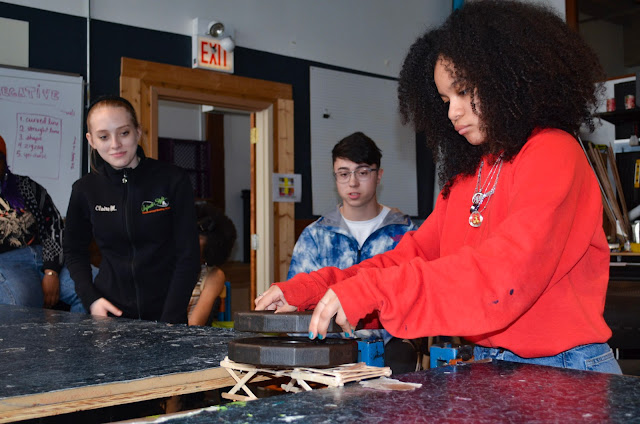Renew the Slums in Accra, Ghana
As my Junior Year comes to a close, my ultimate goal this unit is to take a neighborhood, or space anywhere in the world and use urban planning to improve it. Our final unit of consisted of researching different parks around the world, designing transit systems, and how urban planning shapes socioeconomic statuses. Our class visited the underground Peg-way System and traveled through its tunnels around Chicago. It was moderated by a retired urban planner and professor named Tyler who inspired us to give him ideas on redesigning it. We also discussed the transit system of Chicago and how transportation should co exist within the city more than it is now. Policies and historical context have also taken a large part of disadvantage neighborhoods existing today. White flight has happened in Austin, New York, Hyde Park and more. Red lining is when powerful people bribe people to stay in the area "they belong in" to keep neighborhoods segregated. The government also has the ability to take private property from owners for the use of public space.
My grandmother grew up in Accra, Ghana, and that is what inspired me to take her childhood area and redesign it. This image here is Orgle Road alongside several estates, a school, residential areas, and a restaurant.
I estimated the total area of the space:
To elaborate on what inspired my renovation decisions, I have street view pictures:
What came to mind in what to focus on was the sewage system, the roads, public spaces, restaurants and the school. I imagine the space to walk being wider. People host their own business all the time, so it becomes even more community oriented when the road has food markets and restaurants. Public art and music can naturally become a part of the roads. The concave in the street covered with wood boards can be surrounded by green space, such as minuscule gardens, plants, or food in front of people's living spaces. The school itself can include more greenery in the environment, even inside or on the roofs. Solar panels can provide any energy needed to fuel light or water systems. Below I have a sketched layout of my vision with a key:
Red: Markets, small businesses, restaurants
Yellow: Spherical school
Green: Green Space, Gardens, Trees
Blue: Residencies
The spherical school was inspired by monolithic dome schools in Oklahoma city. The garden spaces were inspired by Balboa Park in San Diego.
I took my 2D ideas and built a 3D model to properly express the plans:
By 2030, provide universal access to safe, inclusive and accessible, green and public spaces, in particular for women and children, older persons and persons with disabilities
My grandmother grew up in Accra, Ghana, and that is what inspired me to take her childhood area and redesign it. This image here is Orgle Road alongside several estates, a school, residential areas, and a restaurant.
| Bird's Eye View, PKA, 2019 |
 |
| Calculations, PKA, 2019 |
To elaborate on what inspired my renovation decisions, I have street view pictures:
 |
| Google Maps, 2019 |
 |
| Google Maps, 2019 |
 |
| Google Maps, 2019 |
What came to mind in what to focus on was the sewage system, the roads, public spaces, restaurants and the school. I imagine the space to walk being wider. People host their own business all the time, so it becomes even more community oriented when the road has food markets and restaurants. Public art and music can naturally become a part of the roads. The concave in the street covered with wood boards can be surrounded by green space, such as minuscule gardens, plants, or food in front of people's living spaces. The school itself can include more greenery in the environment, even inside or on the roofs. Solar panels can provide any energy needed to fuel light or water systems. Below I have a sketched layout of my vision with a key:
 |
| Layout Sketch, PKA, 2019 |
Red: Markets, small businesses, restaurants
Yellow: Spherical school
Green: Green Space, Gardens, Trees
Blue: Residencies
The spherical school was inspired by monolithic dome schools in Oklahoma city. The garden spaces were inspired by Balboa Park in San Diego.
I took my 2D ideas and built a 3D model to properly express the plans:
We had watched a Ted Talk by Peter Calthorp on the seven principles of urban planning for the future. I can connect three of them my design goals. My model represents a mixed-use neighborhood. The residencies, markets/small businesses, and green spaces all support each other's existence. I also made it walk-able, another principal for urban planning. Vehicles aren't entirely essential, and they don't have to be. Accra already has a walk-able trait, so enhancing it would make it beautiful. Finally, I think this design aids in density control. People don't have to dwell in one area, they can travel easily between what they need.
SDG 11.7
This is what my design would do for the people in the Bishop Fynn Awudome Estate. I calculated the volume of two shapes from my model, a hemisphere, and slanted octagon.
My Urban Planning class experience overall connected to my Policy class. I know that the world is changing, but I now realize how prominent and inevitable it is. Solutions can be manufactured from the most natural, simple things.
Works Cited
 |
| Calculations, PKA, 2019 |
Works Cited
“Monolithic Dome Schools in America.” Monolithic Dome Institute, www.monolithic.org/schools/dome-schools-in-america.


Comments
Post a Comment